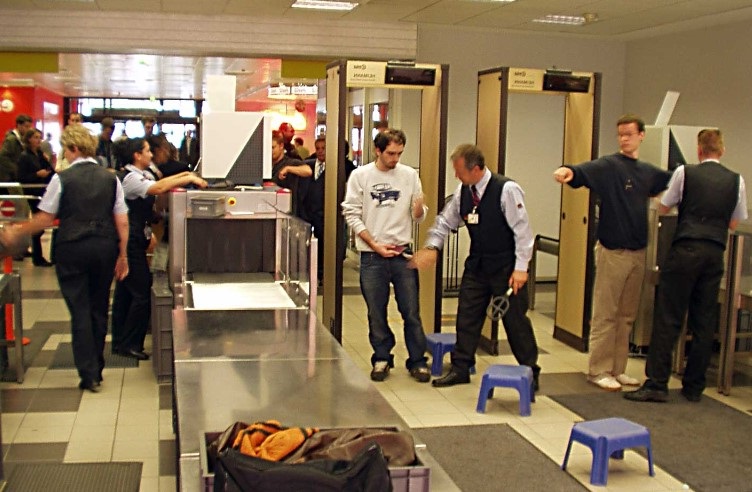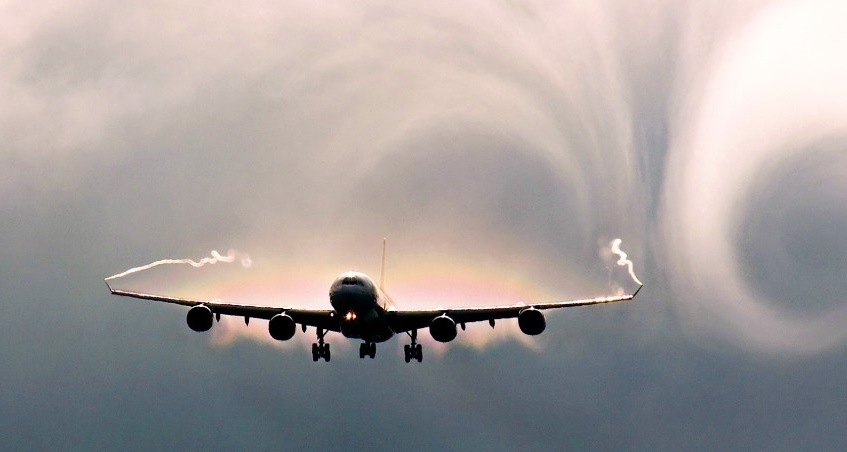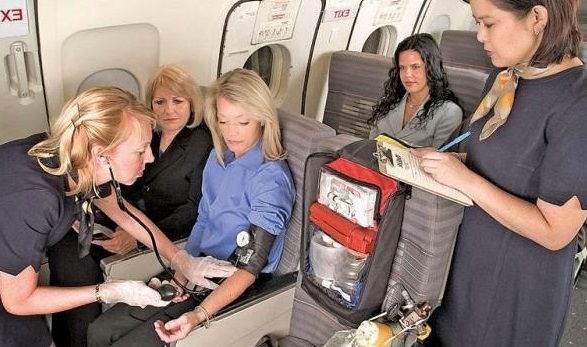
Air travel safety tips is a paramount concern for passengers, airlines, and aviation authorities worldwide. The aviation industry has undergone significant advancements over the years, making air travel one of the safest modes of transportation. Despite these advancements, the importance of ensuring the safety of passengers and crew members cannot be overstated. This introduction aims to highlight the crucial aspects of air travel safety and the purpose of safety tips for a secure journey.
Table of Contents
A. Importance of Air Travel Safety
The importance of air travel safety is rooted in the well-being and security of everyone involved in the aviation process. Millions of people rely on air travel daily, making it essential to maintain the highest standards of safety. Airlines invest heavily in technology, training, and infrastructure to mitigate risks and enhance safety measures. The consequences of safety lapses in the aviation industry can be catastrophic, affecting not only the lives of passengers and crew but also the reputation and financial stability of airlines.
Furthermore, air travel safety is a global concern, with international organizations such as the International Civil Aviation Organization (ICAO) and the Federal Aviation Administration (FAA) working collaboratively to establish and enforce safety standards. These standards encompass aircraft design, maintenance, air traffic control, and crew training, ensuring a comprehensive approach to safety.
B. Purpose of Safety Tips
Safety tips play a crucial role in enhancing passenger awareness and preparedness during air travel. While the aviation industry diligently works on the technical aspects of safety, passengers also have a responsibility to adhere to safety guidelines and protocols. Safety tips provide passengers with essential information on emergency procedures, the proper use of safety equipment, and general behavior during critical phases of the flight.
The purpose of safety tips is to empower passengers with knowledge that can contribute to their safety and that of others on board. Understanding the location of emergency exits, how to use life vests, and following cabin crew instructions are just a few examples of the valuable information imparted through safety tips. By disseminating this knowledge, airlines aim to create a culture of safety consciousness among passengers, fostering a collaborative effort to ensure a secure and pleasant air travel experience for everyone involved.
Pre-Flight Preparation
Efficient pre-flight preparation is a fundamental aspect of ensuring a smooth and secure air travel experience. This section outlines essential steps passengers should take before boarding to enhance their overall journey.
A. Check Travel Documents
One of the primary pre-flight preparations is to thoroughly check and organize travel documents. Passengers must ensure they have a valid passport, appropriate visas if required, and any other documentation mandated by the destination country. It is advisable to confirm the expiration dates and renew any documents that might expire during the trip. Having all necessary paperwork in order helps avoid last-minute complications and ensures a hassle-free check-in process.
B. Familiarize with Airline Policies
Each airline has its set of policies and procedures. Passengers should take the time to familiarize themselves with the specific policies of the airline they are flying with. This includes baggage allowances, check-in procedures, and any unique rules or regulations. Being aware of these policies in advance can prevent misunderstandings and make the overall boarding process more efficient.
C. Verify Flight Details
Verifying flight details is a crucial step to avoid confusion and ensure a seamless travel experience. Passengers should double-check their flight itinerary, including the departure gate, boarding time, and any potential schedule changes. Airlines may provide real-time updates through mobile apps or websites, allowing passengers to stay informed about any modifications to their flight schedule.
D. Pack Essentials
Packing efficiently is essential for a comfortable journey. Passengers should pack their essentials, including travel-sized toiletries, medications, necessary clothing, and electronic devices. It is advisable to pack a change of clothes in carry-on luggage in case of unexpected delays or lost checked baggage. Additionally, travelers should be mindful of any restrictions on liquids, sharp objects, or other items imposed by airline and airport security regulations.
In conclusion, pre-flight preparation is a proactive approach to enhance the overall travel experience. By checking and organizing travel documents, understanding airline policies, verifying flight details, and packing essentials, passengers contribute to a smoother journey and minimize the likelihood of complications during the pre-flight phase.
Airport Security

Airport security is a critical aspect of air travel that ensures the safety of passengers and the overall integrity of the aviation system. This section provides guidelines for navigating airport security efficiently and responsibly.
A. Arrive Early
To facilitate a smooth and stress-free experience, it is crucial for passengers to arrive at the airport well in advance of their scheduled departure time. Airlines typically recommend arriving at least two hours before domestic flights and three hours for international flights. This additional time allows for check-in procedures, security screening, and any unexpected delays that may occur. Being punctual helps passengers avoid the stress of rushing through the airport and minimizes the risk of missing their flight.
B. Follow Security Procedures
Adhering to established security procedures is essential for the safety of all travelers. Passengers should be prepared to present identification, boarding passes, and follow any specific instructions provided by security personnel. This includes removing outer layers of clothing, placing electronic devices and liquids in designated bins, and passing through security scanners without hesitation. Cooperation with security staff ensures a swift and thorough screening process for everyone.
C. Be Mindful of Carry-On Items
Understanding and complying with carry-on baggage regulations is crucial for a seamless security experience. Passengers should be aware of size and weight restrictions for carry-on items and ensure that liquids are stored in containers compliant with airport guidelines. Being organized and proactive in preparing carry-on items for inspection helps expedite the screening process and reduces the likelihood of delays.
D. Stay Alert in Security Lines
Navigating security lines efficiently requires passengers to stay alert and be considerate of those around them. Maintaining awareness of personal belongings, swiftly moving through the line, and avoiding unnecessary delays contribute to a smoother experience for everyone. Passengers should be attentive to announcements and follow any instructions provided by airport staff to ensure a secure and orderly security screening process.
Boarding and In-Flight Safety
Ensuring passenger safety during the boarding process and throughout the flight is a priority for airlines. This section outlines key safety measures to be observed during boarding and in-flight.
A. Listen to Crew Instructions
Upon boarding, passengers are urged to pay close attention to the instructions provided by the cabin crew. These instructions cover essential safety information, including the location of emergency exits, the proper use of safety equipment, and the importance of following crew directives during the flight. Listening attentively to these instructions enhances passengers’ preparedness in the event of an emergency.
B. Fasten Seatbelt Properly
Fastening seatbelts is a fundamental safety practice that should be followed by all passengers. Even during seemingly calm periods of the flight, unexpected turbulence can occur. Passengers should ensure that their seatbelts are securely fastened low and tight across their laps. Compliance with this simple yet crucial measure significantly reduces the risk of injury during sudden turbulence or unexpected events.
C. Be Aware of Emergency Exits
Passengers should familiarize themselves with the location of emergency exits on the aircraft. In the event of an evacuation, knowing the nearest exit and how to reach it swiftly can be crucial. The safety briefing at the beginning of the flight provides information on the nearest exits, and passengers are encouraged to count the rows to the nearest exit to enhance their awareness.
D. Stow Baggage Securely
Proper stowage of carry-on baggage is essential for both safety and convenience. Overhead bins should be utilized efficiently, and passengers should ensure that their bags are securely stored. Loose items can become projectiles during turbulence or sudden stops, posing a risk to passengers and crew. Following airline guidelines for baggage stowage contributes to a safer cabin environment.
E. Understand Oxygen Mask and Life Vest Usage
Passengers should be familiar with the usage of oxygen masks and life vests, typically demonstrated in the pre-flight safety briefing. In the event of a loss of cabin pressure, oxygen masks will deploy, and passengers must secure their own mask before assisting others. Likewise, understanding how to properly don and use a life vest is crucial in the event of a water landing. These safety measures are designed to enhance passengers’ preparedness and increase the likelihood of a successful response in emergency situations.
Health and Comfort
Ensuring the well-being and comfort of passengers during air travel is essential for an enjoyable journey. This section provides guidelines for maintaining health and comfort throughout the flight.
A. Stay Hydrated
Proper hydration is crucial during air travel, as the cabin environment can lead to dehydration. Passengers are encouraged to drink an adequate amount of water before, during, and after the flight. Avoiding excessive caffeine and alcohol consumption can also contribute to maintaining hydration levels.
B. Move and Stretch During Flight
Long periods of sitting can lead to discomfort and stiffness. Passengers are advised to move and stretch during the flight to improve blood circulation and reduce the risk of muscle cramps. Simple exercises, such as ankle circles, shoulder rolls, and standing stretches, can be performed in the cabin to enhance overall comfort.
C. Consider Deep Vein Thrombosis Prevention
For extended flights, especially those lasting several hours, passengers should be aware of the risk of deep vein thrombosis (DVT). Simple measures, such as walking in the cabin, flexing and extending the ankles, and wearing compression stockings, can help reduce the risk of DVT.
D. Follow In-Flight Health Guidelines
Airlines often provide guidelines for maintaining health during the flight, such as proper use of seat cushions and headrests. Passengers should follow these guidelines to ensure a comfortable and healthy journey.
Electronic Devices and Communication
As technology plays an integral role in modern air travel, passengers must adhere to guidelines related to electronic devices and communication.
A. Follow Airline Rules on Electronic Devices
Passengers should comply with airline rules regarding the use of electronic devices during different phases of the flight. Some devices may need to be turned off or switched to airplane mode during takeoff and landing.
B. Use Airplane Mode
When permitted to use electronic devices, passengers are encouraged to switch to airplane mode. This setting disables wireless communication functions, minimizing potential interference with the aircraft’s navigation systems.
C. Be Courteous with Phone Calls
In consideration of fellow passengers, it is advisable to use electronic devices, including phones, with discretion. Keeping phone calls brief and using headphones for audio can contribute to a more pleasant cabin environment.
Turbulence and Weather Awareness

Understanding and navigating through turbulence and varying weather conditions is vital for both passenger safety and peace of mind.
A. Understand Turbulence
Turbulence is a natural occurrence during flights. Passengers are reassured to understand that turbulence, while uncomfortable, is generally not a safety concern. Keeping seatbelts fastened when seated and following crew instructions helps ensure safety during turbulent conditions.
B. Trust Pilot Decisions
Pilots are trained to handle various weather conditions and ensure the safety of the flight. Passengers should trust pilot decisions, including potential changes to the flight path or altitude to avoid adverse weather.
C. Weather-Related Safety Precautions
In the event of severe weather, flight crews may request passengers to return to their seats and fasten seatbelts. Adhering to these instructions is crucial for safety during turbulent weather conditions.
Post-Flight Considerations

The journey does not end upon landing; passengers should remain vigilant and considerate during the post-flight phase.
A. Collect Belongings Carefully
Upon arrival, passengers are reminded to collect their belongings carefully, checking seat pockets and overhead bins for any personal items.
B. Be Cautious in Crowded Areas
In crowded airport areas, such as baggage claim and immigration, passengers should be cautious and maintain awareness of their surroundings. Ensuring personal safety and the security of belongings is paramount.
C. Monitor for Lost Items
Passengers should routinely check their belongings and report any lost items to airport staff or airline representatives promptly.
D. Follow Arrival Procedures
Adhering to arrival procedures, such as passing through immigration and customs, is essential for a smooth transition from the aircraft to the final destination.
Sure, let’s break down the content into a table and include some FAQs along with their answers:
| Section | Subsection | Description |
|---|---|---|
| Importance of Air Travel Safety | Highlights the significance of air travel safety in ensuring the well-being of passengers, crew, and the aviation industry. | |
| A. Importance of Air Travel Safety | Discusses the importance of maintaining high safety standards in the aviation industry. | |
| B. Purpose of Safety Tips | Explains the role of safety tips in enhancing passenger awareness and preparedness. | |
| Pre-Flight Preparation | Provides guidelines for passengers to prepare efficiently before boarding a flight. | |
| A. Check Travel Documents | Advises passengers to ensure all travel documents are in order to avoid complications during check-in. | |
| B. Familiarize with Airline Policies | Encourages passengers to understand the policies of the airline they’re flying with. | |
| C. Verify Flight Details | Recommends double-checking flight details to stay informed about any changes. | |
| D. Pack Essentials | Guides passengers on packing essentials and adhering to airline and airport regulations. | |
| Airport Security | Provides tips for navigating airport security efficiently and responsibly. | |
| A. Arrive Early | Emphasizes the importance of arriving at the airport well in advance of the departure time. | |
| B. Follow Security Procedures | Advises passengers to cooperate with security personnel and follow established procedures. | |
| C. Be Mindful of Carry-On Items | Reminds passengers to comply with carry-on baggage regulations to expedite the screening process. | |
| D. Stay Alert in Security Lines | Encourages passengers to stay attentive and considerate while navigating security lines. | |
| Boarding and In-Flight Safety | Outlines key safety measures to observe during boarding and throughout the flight. | |
| A. Listen to Crew Instructions | Urges passengers to pay attention to safety briefings and instructions provided by the cabin crew. | |
| B. Fasten Seatbelt Properly | Emphasizes the importance of securely fastening seatbelts for passenger safety. | |
| C. Be Aware of Emergency Exits | Advises passengers to familiarize themselves with the location of emergency exits. | |
| D. Stow Baggage Securely | Reminds passengers to properly stow carry-on baggage to prevent injury during turbulence. | |
| E. Understand Oxygen Mask and Life Vest Usage | Highlights the importance of knowing how to use safety equipment in emergencies. | |
| Health and Comfort | Provides guidelines for maintaining health and comfort during the flight. | |
| A. Stay Hydrated | Recommends staying hydrated throughout the journey to prevent dehydration. | |
| B. Move and Stretch During Flight | Advises passengers to engage in simple exercises to improve circulation and reduce discomfort. | |
| C. Consider Deep Vein Thrombosis Prevention | Suggests measures to reduce the risk of DVT during extended flights. | |
| D. Follow In-Flight Health Guidelines | Encourages passengers to follow airline guidelines for a comfortable journey. | |
| Electronic Devices and Communication | Provides guidelines for using electronic devices and communicating during the flight. | |
| A. Follow Airline Rules on Electronic Devices | Advises passengers to comply with airline rules regarding electronic device usage. | |
| B. Use Airplane Mode | Recommends switching electronic devices to airplane mode to minimize interference. | |
| C. Be Courteous with Phone Calls | Encourages passengers to use electronic devices discreetly to maintain a pleasant cabin environment. | |
| Turbulence and Weather Awareness | Offers guidance on navigating through turbulence and varying weather conditions. | |
| A. Understand Turbulence | Assures passengers about the nature of turbulence and the importance of seatbelt usage. | |
| B. Trust Pilot Decisions | Advises passengers to trust pilot decisions regarding weather-related adjustments. | |
| C. Weather-Related Safety Precautions | Reminds passengers to follow crew instructions during severe weather conditions. | |
| Post-Flight Considerations | Provides tips for passengers to consider after landing and during the post-flight phase. | |
| A. Collect Belongings Carefully | Reminds passengers to check for personal belongings before leaving the aircraft. | |
| B. Be Cautious in Crowded Areas | Advises passengers to be cautious and aware of their surroundings in crowded airport areas. | |
| C. Monitor for Lost Items | Encourages passengers to report any lost items to airport staff promptly. | |
| D. Follow Arrival Procedures | Emphasizes the importance of following arrival procedures for a smooth transition. | |
| Conclusion | Summarizes the air travel safety tips and emphasizes personal responsibility for a safe journey. | |
| A. Recap of Air Travel Safety Tips | Recaps the comprehensive guidelines provided for air travel safety. | |
| B. Emphasis on Personal Responsibility | Highlights the role of personal responsibility in ensuring a safe journey. | |
| C. Wishing Safe and Pleasant Travels | Concludes with well wishes for safe and enjoyable travels for all passengers. |
Conclusion
A. Recap of Air Travel Safety Tips
In conclusion, these comprehensive air travel safety guidelines cover pre-flight, in-flight, and post-flight considerations, emphasizing the importance of passenger responsibility and awareness.
B. Emphasis on Personal Responsibility
Ensuring a safe and pleasant journey involves active participation from each passenger. Personal responsibility, adherence to safety guidelines, and cooperation with airline staff contribute to the overall well-being of everyone on board.
C. Wishing Safe and Pleasant Travels
As passengers embark on their journeys, they are encouraged to implement these safety tips, prioritize their well-being, and enjoy a safe and pleasant travel experience. Wishing all travelers safe and smooth journeys.
FAQs (Frequently Asked Questions) and Answers:
- Are turbulence and weather-related adjustments common during flights?
- Turbulence is a natural occurrence during flights and is generally not a safety concern. Pilots are trained to navigate through various weather conditions and make necessary adjustments to ensure passenger safety.
- What should I do if I lose my belongings during the flight?
- Passengers should promptly report any lost items to airport staff or airline representatives. It’s essential to provide details such as the description and possible location where the item was misplaced.
- Can I use my electronic devices freely during the flight?
- Passengers should adhere to airline rules regarding the use of electronic devices. Some devices may need to be switched to airplane mode or turned off during specific phases of the flight.
- How early should I arrive at the airport before my flight?
- Airlines typically recommend arriving at least two hours before domestic flights and three hours for international flights to allow sufficient time for check-in, security screening, and potential delays.
- What should I do if I encounter severe weather during the flight?
- Passengers should follow crew instructions, which may include returning to their seats, fastening seatbelts, and remaining calm. Pilots may make adjustments to the flight path or altitude to avoid adverse weather conditions.


